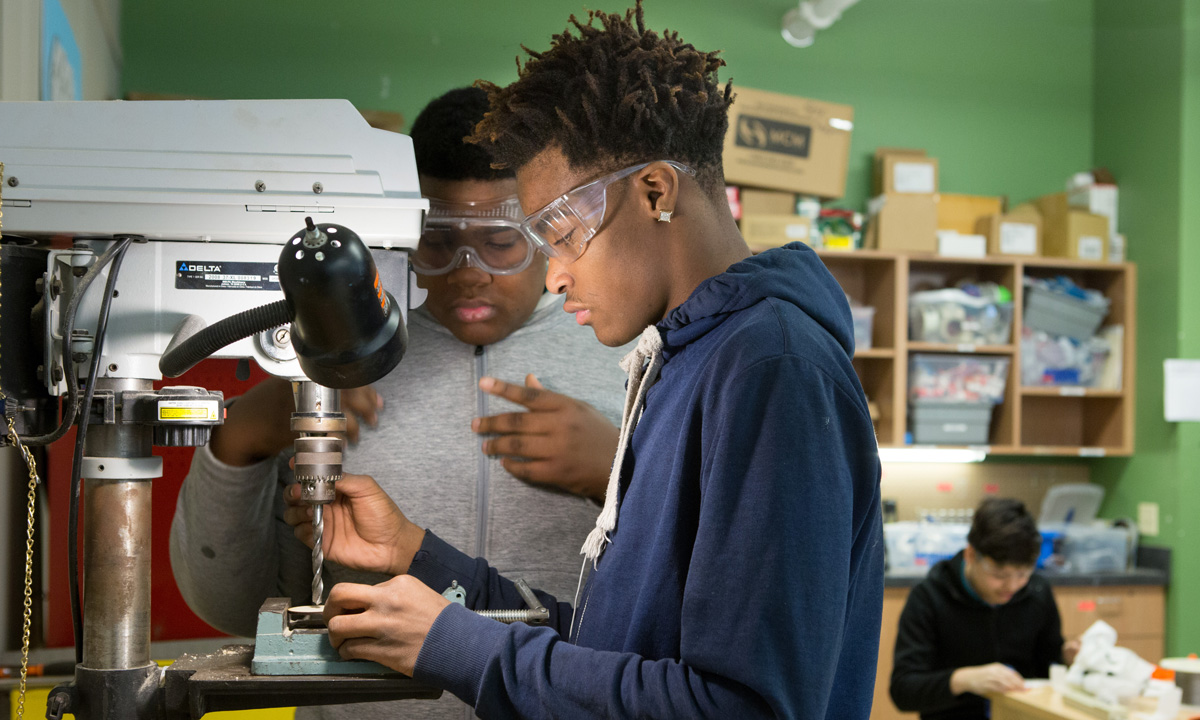The U.S. Needs Workers to Fill Good-Paying Jobs. The Time to Train Them Is in HS
Shackleford & Hengtgen: School counselors are stretched too thin to provide students with the guidance they need. How the federal government can help.

Get stories like these delivered straight to your inbox. Sign up for The 74 Newsletter
Imagine a future where all high school students had a professional counselor who was dedicated solely to providing them with tools and personalized support to help them navigate the complexities of their educational and career paths. This is not just a pipe dream; it is a possible — and necessary — step toward creating a more equitable education system while preparing young people for careers. In an era when the future of work is rapidly evolving, ensuring that students have clear pathways from K-12 to higher education and careers — and the support to take advantage of all those options — is more important than ever.
Why? In 2023, employers added 3.1 million jobs — but many of those openings are going unfilled. In fact, there are 88 available workers for every 100 available jobs in the U.S.
According to the U.S. Chamber of Commerce Foundation’s America Works post-pandemic survey, 36% of people aged 25 to 34 say they’re primarily focused on acquiring new skills, education or training before they re-enter the job market. In an ideal world, the time to train them would be while they’re in school. However, counselors are stretched too thin to provide students with tailored guidance and steer them toward pathways that are essential for selecting degrees and certificates that align with their interests and aspirations.
This shortage of high-quality advising and college and career exploration creates gaps not only between higher- and lower-income populations, but even within the same school, as students from specific populations — like those with disabilities, children of color or English learners — face additional barriers. Federal support is crucial for helping students from these underserved groups. It can help bridge these gaps and safeguard against disparities, ensuring that young people are guided to opportunities that will set them up for long-term success. By investing in these pathways, the federal government can help create a more equitable education system, which in turn contributes to a stronger economy.
As detailed in our new report, “A Vision for Equitable Pathways: Enhancing Support and Innovation in College and Career Counseling,” at the heart of a successful system is navigational support — dedicated guidance that helps students and their families make informed decisions at every stage of their educational journey.
Our vision for an ideal system is built on five key elements:
- Clear Choices: Students need a thorough understanding of their educational and career options. This includes knowing what pathways are available — from a traditional four-year degree to a certification earned at a community college to an apprenticeship — what each entails and potential outcomes.
- Start Smart: It is crucial that students and their families understand these available paths before high school. Early exposure and education about these options can help set students on a successful trajectory.
- Access for All: Information must be accessible to all students — in multiple formats and languages — to ensure that no one is left behind.
- Guided Beginnings: Students should have regular opportunities to explore postsecondary options beginning early in high school, and these should be integrated into the regular curriculum. This will allow students to make informed decisions as they progress toward graduation and will ensure that they don’t miss out on opportunities.
- Final Prep: As students approach the end of high school, they need dedicated, targeted support to prepare for their next steps. This includes help with college applications, financial aid guidance and career readiness programs.
For these reforms to be properly implemented in every school, All4Ed and EdTrust are advocating for a comprehensive federal response. This could include enhanced support and oversight through new grant programs and legislation mandating universal access to pathways counselors. Innovation and best practices must be incentivized, with partnerships fostered among K-12 schools, higher education and industry. Additionally, national training and certification for pathways counselors should be established, alongside robust monitoring and accountability.
These measures can help eliminate barriers that stand in the way of equitable access. Among these are the legacy of racialized tracking in career and technical education, a shortage of counselors and insufficient data-sharing about how long it might take to reach the top salary in a certain profession, job-associated health risks and similar issues. These are in addition to challenges faced by specific student populations, such as those in rural areas and multilingual learners.
This vision is not just an educational or economic imperative; it is a moral one. America must ensure that all children, regardless of their background, have the opportunity to pursue their dreams and contribute their talents to society. Federal leadership is essential in making this vision a reality, transforming pathways counseling from a privilege for a few into a right for all. Only then can the United States build a future in which every young person is empowered with the resources, opportunities and guidance needed for success.
Get stories like these delivered straight to your inbox. Sign up for The 74 Newsletter

;)

